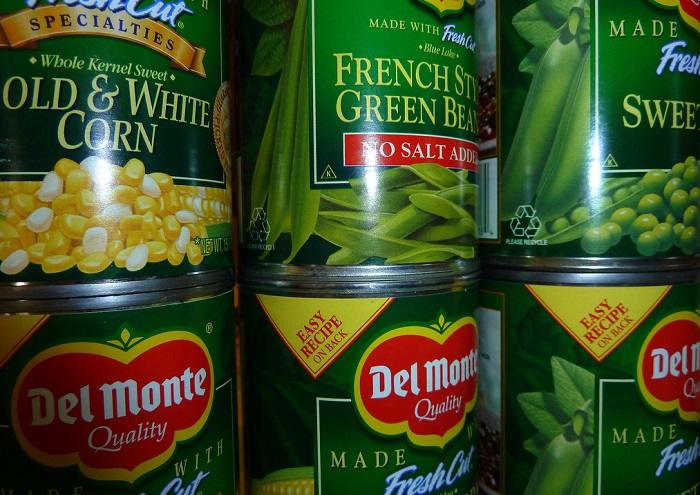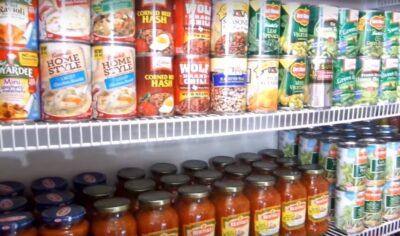It happens in households across the United States every day. A trip to the grocery store is unpacked at home with the goal of simply getting things put away and the chore completed.
Fresh, shiny new cans of fruits and vegetables are placed in the front of the pantry shelves, pushing to the rear their more senior shelf mates. Perishables like pickles, butter and produce likely get the same treatment, smothering into obscurity the current “close to expiration” refrigerator residents.
The result? A lot of nutritious and nourishing food ending up spoiled and relegated to the wastebasket or compost bin.
And although this example of poor inventory control and rotation is unfortunate, when this same scenario plays out in your rather expansive stockpile, the results can be devastating to your preparedness and your wallet.
A scattered approach to your inventory organization can also lead to missing essentials or considerable overstocks of certain items.
The Quickest And Easiest Way To Store A Month’s Worth Of Emergency Food! [2]
To help you avoid such an avoidable catastrophe, we have compiled a list of mistakes often made — mistakes that could lead to disaster when you most need your stockpile.
1. Not keeping inventory.
This does not have to be an elaborate system which consumes a considerable amount of your time and effort. A simple legal pad strategically hung from the door of your storage area or pantry will suffice.
The end-game here is to simply be able to tell, at a glance, what exactly you have and what you are missing.
Divide the sheet into columns which represent major categories of food. Then simply list what you have, the quantity that was stocked and the date. If you are feeling particularly ambitious and want to refine your document, a straightforward spreadsheet or graph paper document could include details like expiration date and shelving location.
The keys here are to keep the process simple and be diligent in using it. All the planning and design effort in the world will be useless if it simply hangs there unused.
2. Not making it visible.
Out of sight, out of mind, right? There is a tendency for people to forget that which they cannot see. This means that if you have a case of canned green beans stuffed in a plastic tote and shoved back to the rear of your bottom pantry shelf, more likely than not you will forget it is there.
Whenever possible, keep your stocked inventory items visible. There are a ton of ready-to-install options available in the marketplace, but a touch of ingenuity and some handiwork can produce some great solutions for things like vertical can storage and the like.
Keeping things visible makes future stock checks prior to the grocery run much easier.
3. Not using it.
It often surprises me when I learn of stockpilers who do not regularly use their own inventory. In these cases, the stockpile inventory is seen as an “emergency only” resource and hence, is locked up and off-limits.
The World’s Healthiest Survival Food — And It Stores For YEARS and YEARS! [4]
While we are not saying to eat up your stock to the point that your inventory dwindles, we are recommending that the food you put away into stockpiles be used and replenished on a regular basis.
No matter how well canned or preserved, food in any of its forms has a viable shelf life. Before going to the grocery store, draw from your stockpile inventory and replace it with a fresh purchase that has a more advanced expiration date.
Don’t forget to put that new stock in the back of the rotation and note the addition to your inventory sheet.
4. Not protecting it.
The locations and conditions of your stockpile are every bit as important as the inventory levels or organization. Food that has been damaged by a leaking ceiling or wall or chewed on by a winter-hungry rodent is of little use to the human inhabitants of the home.
Cool, dry and dark are the three precepts to follow when at all possible. Certain produce such as potatoes and onions do well in root cellars but, depending on humidity levels, can root prematurely.
Lastly, if your pantry or stockpile area is vulnerable to rodent visitors, consider using quality, tight-sealing plastic totes to protect your bags of grains, pasta and the like from visiting diners.
What stockpiling advice would you add? Share it in the section below:
Discover The Secret To Saving Thousands At The Grocery Store. Read More Here. [5]


